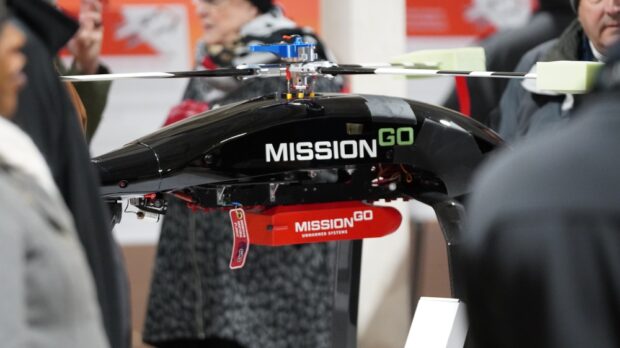The successful completion of nine operations in Lubbock, TX last week marks a turn in uncrewed aircraft systems (UAS) for West Texas and beyond.
The Matador Uncrewed Aerial System (UAS) Consortium, co-developed by Texas Tech University Health Sciences Center and 2THEDGE, LLC, is an industry & university partnership improving rural communities through BVLOS UAS Operations. MissionGO joined the Consortium for these operations, bringing their team of aviation experts and a portion of their UAS fleet, including MissionGO’s signature aircraft, the MGV100.
MissionGO, a supplier of uncrewed aircraft systems production and operations, played a critical role in five of the nine operations including multiple STEM presentations featuring medical staff from UMC and local high schools, Shallowater and Frenship, infrastructure inspections of Sandia Labs wind turbines and solar panels with the Texas Tech Wind Institute, and a 10.5+ mile flight over a WATCO rail line. The team also participated in panel discussions with local college students about the future possibilities for UAS in the medical and infrastructure industries and led an aerial demonstration for dozens local executives concluding the week of flight operations.
“The work being done by 2THEDGE and Texas Tech University Health Sciences Center is proving uncrewed aircraft can be implemented today for immediate and significant improvement for many individuals and communities throughout the Texas Panhandle region,” says Chris Corgnati, President of MissionGO. “MissionGO is thrilled to share our experience and aircraft to the community here to assist in proving the value of UAS operations.”
In addition to the operations completed by MissionGO, other members of the Matador UAS Consortium also successfully completed a long range organ delivery flight with an Optionally Piloted Aircraft (OPA) – during which MissionGO sister company, MediGO, provided the real-time tracking and sensor information – long-range clinic run, and bridge inspections, as well as a flu vaccine and Thanksgiving meal kit delivery to a rural community where the average distance to a local grocery story is 60+ miles.
Source: Press Release

